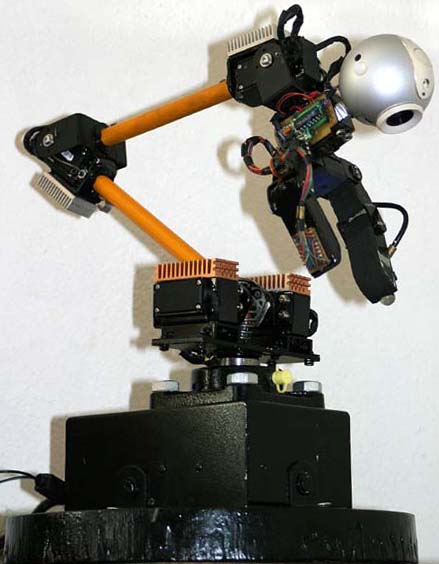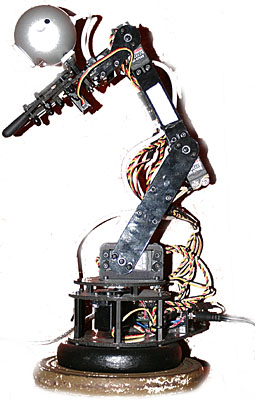This is the second robotic arm prototype. It's fully
equipped with three touch sensors, one slip sensor,
a camera and a microphone. It has ten servo motors,
six to control the arm and four to control the gripper.
All ten servos are digital with metal/titanium gear.
The arm's length, from shoulder to the gripper's
centre, is about 18 inches or 52 centimetres.
It's capable of lifting about 1kg. I had to add four heat
sinks to dissipate the heat from servos and also add a
system of springs, at the shoulder and elbow level to
compensate for the arms weight. The base support is
of massive iron and it weights 10kg - I had to add this
in order to compensate for inertia created by fast
movements of the arm. And also had to add rubber
mounts at key points to damped/absorb the vibrations.
There are some twenty one cables running down the
arm segments, which was quite a challenge to fit
through a tube with an inner diameter of only 10mm.
At the joints cables will run though flexible cable guides.
All joints run on ball bearings, including the gripper's
four segments. At the base, the shoulder is supported
by a heavy duty, high precision four bolt flange bearing.
The robot uses two different power supplies, one
for the electronics and the other (high amperage) for
the servos. The servomotors will eat something like
240Watt/h under load. I had to use a separate high
power wiring for them.
|

|

